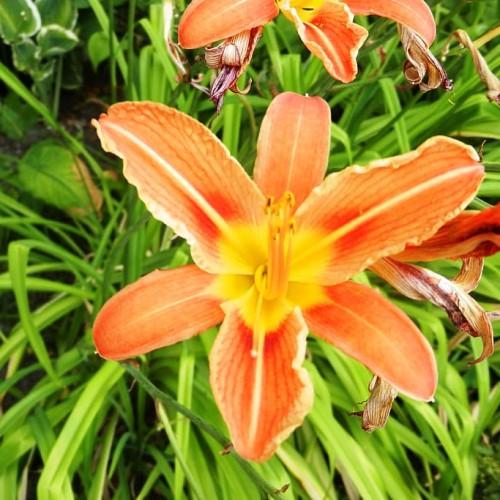
daylily
Hemerocallis 'Flasher'
Cycle:
Herbaceous Perennial
Watering:
Average
Hardiness Zone:
3 - 9
Flowers:
Flowers
Sun:
Full sun,part shade
Leaf:
Yes
Growth Rate:
High
Maintenance:
Low
Drought Tolerant:
Yes
Salt Tolerant:
Yes
Care Level:
Moderate
watering
Daylilies should be watered regularly throughout the growing season so the soil remains evenly moist, but not soggy. During hot weather, the plants may need water every other day or even daily. During cooler weather, a deep watering every 4 to 5 days is usually sufficient. When watering daylilies, water the soil directly around the plants, avoiding wetting the foliage. Applying a layer of mulch around the plants will help the soil retain moisture and discourage weeds.
sunlight
Daylilies (Hemerocallis 'Flasher') prefer to be located in sunny areas with at least 6 to 8 hours of direct sunlight per day during the peak growing season. During the winter months, these hardy plants can tolerate partial sun or bright light if temperatures remain above freezing. As the seasons change, so will the need for light and it is best to observe the plants carefully and adjust light levels accordingly. Daylilies can be grown in either full sun or partial shade, depending on the climate of the area they are located in. In cooler climates, they should be provided with at least 6-8 hours of direct sunlight, while in warmer climates, a few hours of strong morning sun will suffice. Proper sunlight exposure may also help plants to become more resistant to disease and persistent weeds.
pruning
Daylily (Hemerocallis 'Flasher') should be pruned during the spring after flowering has passed. The plant should be pruned to a moderate degree, removing spent flowers and unwanted foliage. Remove spent blossoms by cutting them back to within 2 to 3 inches of the base of the plant. Pruning dead foliage can help to encourage new growth and keep the daylily looking its best. To maintain the desired shape of the plant, prune back thin, tall stems to promote more compact, full growth. Prune branches and foliage judiciously to avoid cutting off future flowers and to maximize the vibrancy of the flower colors.
